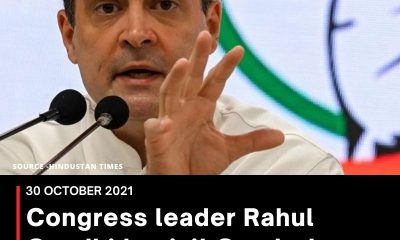India Hot Topics
Rahul Gandhi connects PM’s image and China’s plan

SSC Exam Calendar 2025
SSC Exam Calendar 2025 revised, check CGL, CHSL, SI in Delhi Police, MTS, JE and other exam dates here
-

 Ranbir Kapoor2 months ago
Ranbir Kapoor2 months agoRanbir Kapoor and Alia Bhatt inspect their new dream home in Mumbai days after anniversary
-

 Mahakumbh2 months ago
Mahakumbh2 months agoMahakumbh viral girl Monalisa looks unrecognisable after glamorous transformation in new videos: Watch
-

 American Dream1 month ago
American Dream1 month agoThe new American dream’: Meet the US expat who built a $23M food business in India
-
.jpg)
.jpg) Bollywood1 month ago
Bollywood1 month agoSiddharth Malhotra carries pregnant wife Kiara Advani’s bag in unseen pic from New York ahead of Met Gala 2025
-

 Sunny Leone2 months ago
Sunny Leone2 months agoSunny Leone’s fitness secrets for toned body at 43: Vegetarian diet to different menu every day for lunch and dinner
-

 SSC Exam Calendar 20251 month ago
SSC Exam Calendar 20251 month agoSSC Exam Calendar 2025 revised, check CGL, CHSL, SI in Delhi Police, MTS, JE and other exam dates here
-

 Parineeti Chopra2 months ago
Parineeti Chopra2 months agoParineeti Chopra has the ‘best sensations’ as Raghav Chadha recreates her viral Hasee Toh Phasee reel. Watch
-

 Ajith Kumar2 months ago
Ajith Kumar2 months agoAjith Kumar says he could be ‘forced into retirement’, calls himself an ‘accidental actor












.jpg)
.jpg)
.jpg)
.jpg)
.jpg)

.jpg)
.png)

%20(2).jpg)



%20(1).jpg)
.jpg)







